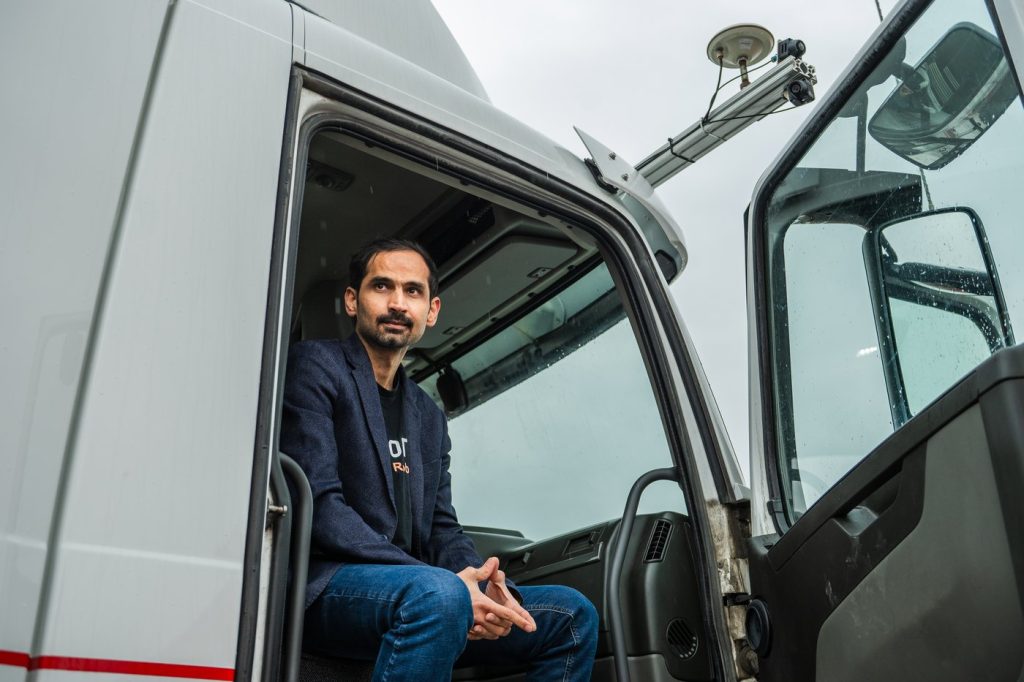In Ontario, Canada, autonomous trucking is making significant strides, exemplified by a box truck from Gatik Inc. that operates between Toronto and Brampton. This truck, equipped with a multitude of cameras, radars, and lidar, transports groceries daily from a Loblaw distribution warehouse to the company’s headquarters approximately 25 kilometers away. Gatik, an autonomous trucking firm with roots in California and an office near the supermarket, has placed its first self-driving truck on Canadian roads in 2020.
Currently, five of Gatik’s six Isuzu box trucks autonomously deliver goods along fixed routes within the Greater Toronto Area, albeit with a safety driver onboard. This advancement showcases Canada’s commitment to leading the way in autonomous trucking technology. Other companies, such as NuPort Robotics, are also contributing to this progress. NuPort, in collaboration with Canadian Tire Corp. Ltd., is working on a pilot project to move goods within a distribution center north of Toronto, utilizing a Volvo eighteen-wheeler for testing purposes.
Waabi Innovation Inc., another prominent player in Canada’s autonomous trucking scene, boasts about a dozen autonomous trucks operating between Dallas and Houston for Uber Freight. With substantial backing from investors like Uber and Nvidia, Waabi is competing to deploy the first driverless long-haul truck in Texas by the end of the year. CEO Raquel Urtasun emphasizes the advantages of robotic big rigs, particularly in addressing the severe driver shortage projected to exceed 40,000 annually by 2030, as well as improving fuel efficiency by up to 20 percent.
The market for road freight is vast, with revenues in the United States totaling approximately US$987 billion in 2023. However, the regulatory landscape remains a hurdle. Currently, Ontario is the only province in Canada permitting such autonomous trucking operations through a pilot program for testing self-driving vehicles.
Safety remains a significant concern within the industry. Proponents argue that self-driving trucks eliminate human errors, such as distraction and fatigue. They typically operate on highways where navigating is less complex due to fewer unexpected variables compared to urban environments. However, there are challenges; automated systems may struggle in various conditions, especially during low light or adverse weather. An incident involving TuSimple, a San Diego-based startup, highlighted these risks when an autonomous truck made a sharp left turn that resulted in a collision with a concrete barrier.
Notably, research has indicated that while self-driving vehicles might have lower overall crash rates, they can perform poorly in specific situations compared to human drivers. For instance, automated systems tend to detect obstacles like children and individuals with darker skin tones less effectively. Additionally, environmental factors, such as snow and fog, pose challenges for the visual sensors relied upon by autonomous technologies.
Despite these safety concerns, there is optimism regarding innovations such as Waabi’s "AV 2.0" generative AI system, which aims to improve decision-making by simulating countless scenarios rather than relying solely on preset responses. Urtasun believes that this technology can respond more human-like, choosing the safest action rapidly in various situations.
However, the industry's pace is hindered by regulatory challenges, with Canada often perceived as slow-moving in this arena. There remains a shared conviction among industry leaders that expanding the presence of self-driving trucks on Canadian roads is inevitable. The race for self-driving technology continues, with a keen focus on how these advancements can reshape the logistics landscape while addressing inherent safety and regulatory challenges.










